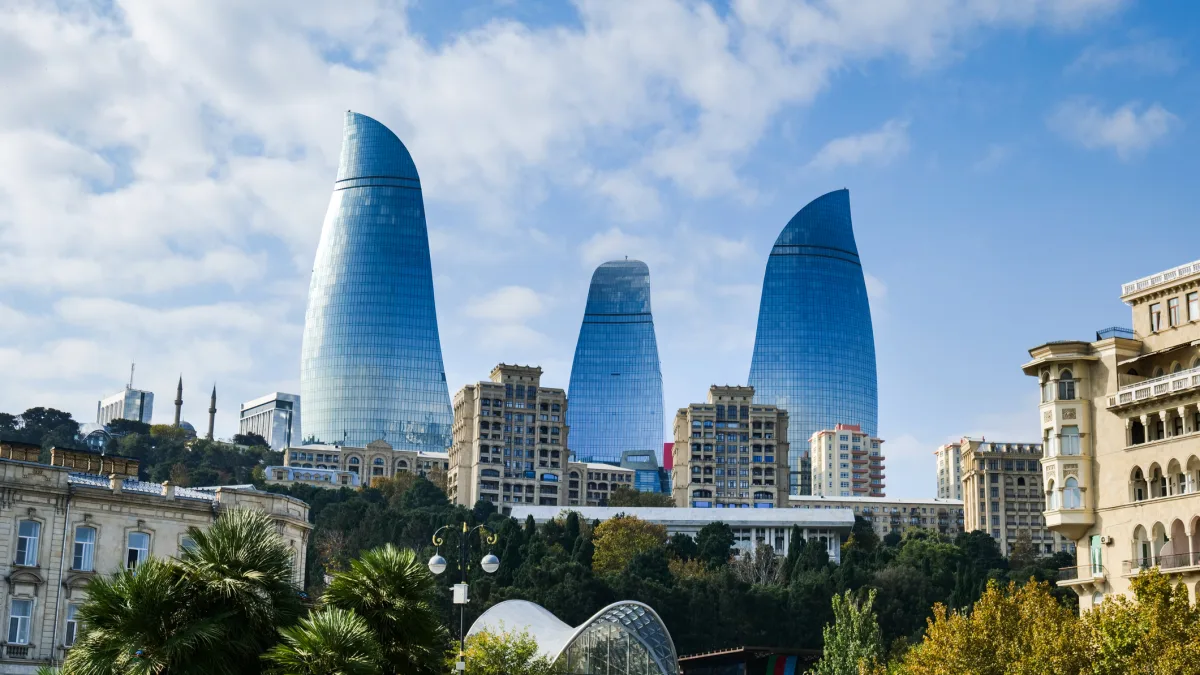At the World Economic Forum in Davos in January, the word on everyone’s lips was “polycrisis”. Around the world – and particularly here in Central and Eastern Europe – companies, governments and societies have been facing a combination of emergencies: the war in Ukraine, political instability, surging inflation, the climate crisis and growing cybersecurity threats. And here in our region, many of the risks are even more pronounced than elsewhere.
Looking into the data provided by our 26th Annual Global CEO Survey, based on interviews with more than 4,400 executives around the world and launched at Davos, you could be forgiven for concluding that the polycrisis and the resulting pessimism will define the rest of 2023. In our region, 74 per cent of CEOs (and 73 per cent globally) believe world economic growth will slow over the next 12 months.
Yet perhaps surprisingly, Davos ended on an optimistic note, as the IMF signalled it would upgrade its economic forecasts. Similarly, we’ve also detected moderate optimism in the survey’s findings for our region.
CEOs in Central and Eastern Europe told us that despite their reasonably pessimistic view on global economic growth, they are more confident about the things they are better able to control: their own company’s revenue growth prospects. Forty-six per cent of business leaders in CEE even said that they’re “extremely confident” in revenue growth in the next 12 months, a figure that rises to 50 per cent when looking at a three-year horizon.
Underlying that optimism is a conviction that business as usual is no longer an option. This is another striking message from the survey: CEOs in our region are even more acutely aware than their international counterparts of the need to transform their businesses, with 45% (vs 40% globally) saying their companies won’t be economically viable a decade from now if they continue on their current path.
I’m inspired by CEOs’ strong determination to seize opportunities for transformation in response to crises and threats. And I’m also inspired by their confidence. CEOs recognise the first-mover advantage for those who set out boldly on the path of transformation, and their companies will not only survive crises but thrive.
In my role as a CEO, I have the privilege of speaking with business partners and colleagues, so I know that leaders should always be asking what they can do to help their organisations weather the storm and help turn crises into opportunities.
Since the launch of our CEO Survey, I have challenged myself to sum up my top three pieces of advice for what we can focus on as business leaders in our region. Each of them comes with a different time frame; I’ll present them below.
Fight inflation, but remember the long game
Inflation is the top risk that business leaders see over the next 12 months, cited by 55 per cen of CEOs. In response to near-term economic challenges, executives in our region are largely in line with global peers in taking action to fuel revenue growth and cut costs. But one tactic stands out: CEE executives have been faster to implement price increases, with 58 per cent of CEOs reporting this, compared to 51 per cent of their global peers.
This is understandable, if for no other reason that the threat from inflation is more pronounced here in our part of the world. Eurostat data published in December 2022 show the lowest annual inflation rates in Spain (6.7 per cent), France (7.1 per cent) and Malta (7.2 per cent), with the highest in CEE: Hungary (23.1 per cent), Latvia (21.7 per cent), Estonia and Lithuania (both 21.4 per cent) lead the list.
Still, it’s noteworthy that executives perceive inflation as a relatively transitory threat: While 55 per cent say their companies are “extremely exposed” to it over the next 12 months, the figure for the next five years declines to 36 per cent.
That means CEOs must strike a fine balance when passing on increased costs to their customers – who of course are also becoming more price-sensitive. PwC’s 2022 Global Consumer Insights Pulse Survey revealed that consumers are ready to shop around when their needs aren’t met, with 40 per cent more likely to use comparison sites, and 37 per cent shopping across multiple retailers.
It’s also heartening to see that CEE business leaders are less likely than their global peers to reduce their workforces in response to inflation, with 67 per cent (versus 60 per cent) saying they have no such plans. The message is clear: smart CEOs realise that painful as it is, inflation is largely a transitory threat – while the war for talent is a long-term reality. We’ll return to that in a moment.
On cybersecurity, go further, faster
The war in Ukraine and growing concern about geopolitical instability have caused CEOs to rethink aspects of their business models and the way they perceive risk. While in comparison to last year’s CEO Survey findings, cyber risks have slipped down the list of regional and global business leaders’ threat priorities (20 per cent said this is the top threat), the picture changes for their five-year outlook. Over that timeframe, cyber risks join inflation, macroeconomic volatility, and geopolitical conflict in the top tier of risk exposure.
But even though CEOs in CEE are increasing cyber investments in response to geopolitical conflict, they’re not doing as much as their global counterparts (CEE: 34 per cent, global: 48 per cent). And this is so even though 41 per cent of senior executives in Central and Eastern Europe say cyber breaches of their systems have increased since 2020, according to PwC’s annual Global Digital Trust Insights Survey.
Compared with previous years in which we’ve stressed the need for more attention to cybersecurity, it’s heartening to see the message is starting to get through. But more is still needed. CEOs need to bear in mind that the cost of cyber breaches goes much further than direct financial costs. They can lead to loss of customers and damage brands.
Remember too that this is an area where the first-mover advantage is palpable. To be blunt (not to say cynical), hackers and other malicious actors have plenty of victims to choose from. That means a lot of cybersecurity is simply about making yourself a harder target than others.
Ramp up employee engagement efforts
Still, chief among long-term threats to their businesses, for leaders in our region, are potential shortages of labour and skills. This is part of the ongoing global war for talent I mentioned briefly above, which CEOs have been telling us about in surveys for several years now. When asked about the forces most likely to affect their industry’s profitability over the next 10 years, as many as 64 per cent of regional CEOs cited skills shortages as impacting them “to a large/very large extent”, well above the 52 per cent global rate.
Finding and retaining employees, especially those with specialised or scarce skills, today requires more than just higher pay. According to the PwC 2022 Global Workforce Hopes and Fears Survey, fulfilling work and the opportunity to be one’s authentic self at work also matter to employees who are considering a job change.
CEOs can fight the war for talent in several ways. First, the higher concern throughout our region suggests a systemic issue. It’s worth looking for opportunities to partner with educational institutions to ensure they’re giving graduates the skills they need in today’s workplace. Within their companies, CEOs need to redouble their efforts to empower and engage their people. The old adage is that nothing is certain but death and taxes. For now, at least, we can add a third factor: the need to constantly compete for the best human capital on the market.
Ultimately, while this year’s CEO Survey may seem pessimistic at first glance, I see in it the seeds of fundamental positive change. The insights our survey reveals can help business leaders take bold actions to address the myriad of challenges they are facing and achieve sustained positive outcomes. The polycrisis is real – but so is my conviction that our region will emerge from it even stronger.
I encourage you to explore the CEE results of the 26th Annual Global CEO Survey and share your views.







